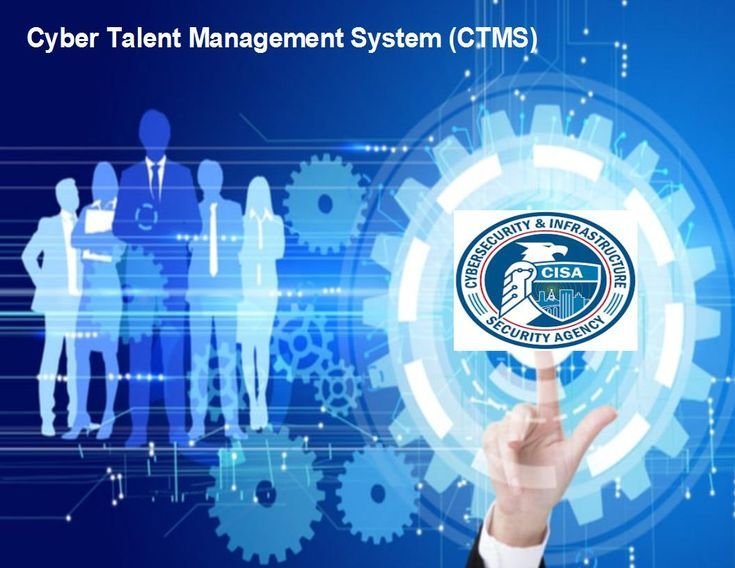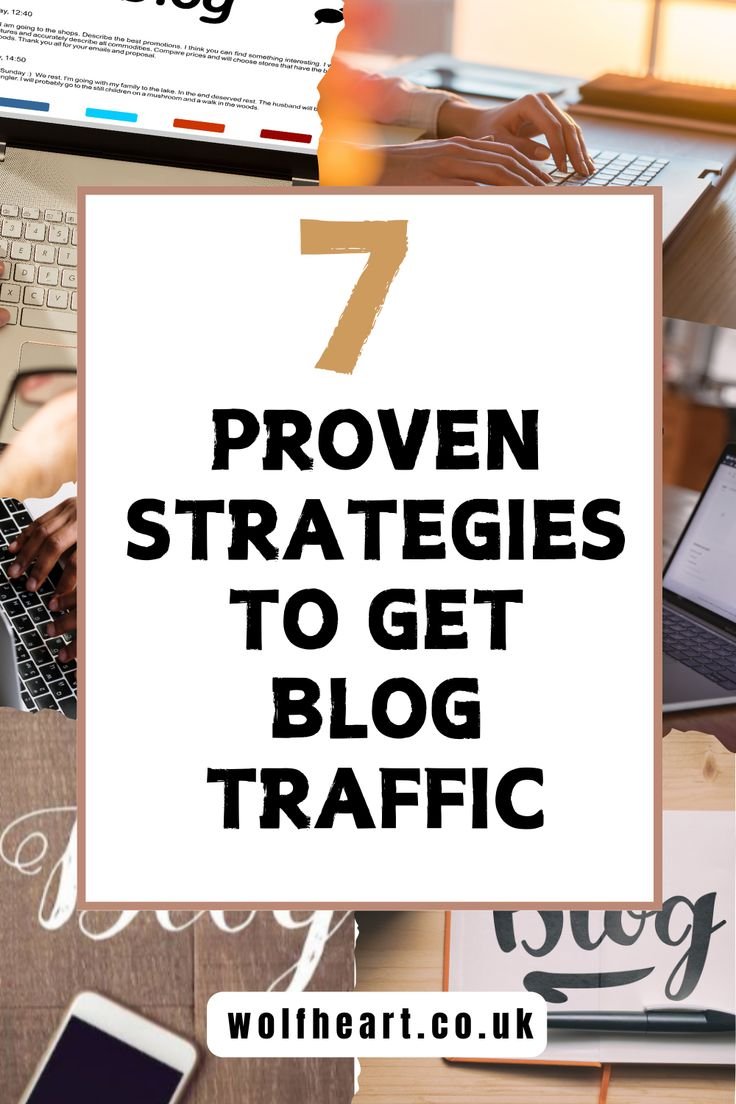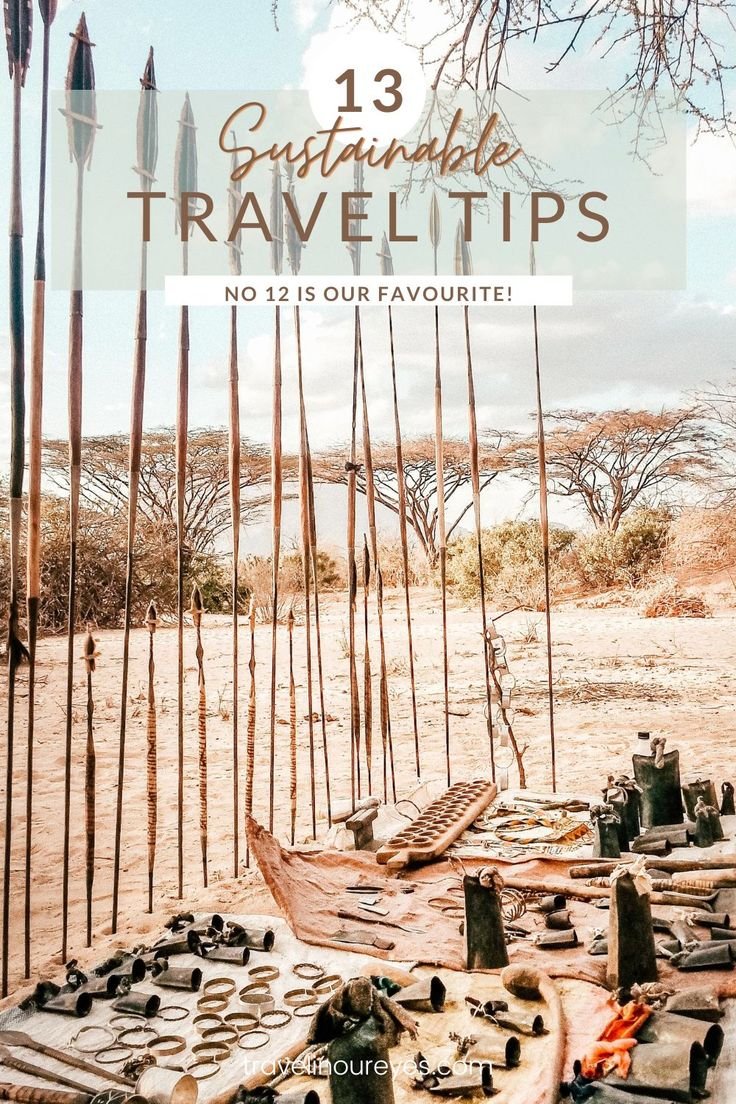
Ultimate Guide to Bodyguard Services in London: Safety in a Global City
London is one of the most dynamic cities in the world. It attracts political leaders, celebrities, corporate executives, and high-net-worth individuals. With this prominence comes increased security risks, making personal protection essential for many people. Bodyguard services provide a trusted solution, ensuring safety and privacy while allowing clients to live and work without disruption.
This blog will explore why bodyguard services are so important in London, what makes an excellent bodyguard, the benefits of hiring one, and how to select the right security provider.
London’s Unique Security Challenges
As a global hub for business, politics, and entertainment, London is constantly in the public eye. High-profile events, international conferences, and major media gatherings create opportunities for unwanted attention and security threats.
From paparazzi encounters to more serious risks like stalking or harassment, personal safety can be compromised quickly. Professional bodyguards act as both a deterrent and a proactive shield, enabling clients to carry out daily tasks and attend events with confidence.
What Makes a Great Bodyguard?
A professional bodyguard must possess a blend of skills and qualities that go beyond physical strength. They are trained in risk assessment, threat detection, defensive tactics, and crisis management. They must remain highly vigilant while blending seamlessly into their surroundings.
Furthermore, many bodyguards receive additional training in tactical driving, emergency first aid, and advanced communication strategies. These diverse skills ensure they can act decisively and appropriately in any situation, providing clients with complete peace of mind.
The Benefits of Hiring a Bodyguard in London
Hiring a bodyguard is not just about protection; it is about freedom. With an expert by your side, you can move freely through the city, attend high-profile events, and travel securely without constant fear of risk.
Another significant advantage is the flexibility these services offer. Depending on the situation, clients can opt for a visible security presence or a discreet professional who blends into the background. Tailored protection ensures that security never interferes with personal or professional commitments.
How to Choose the Right Service Provider
Selecting the right bodyguard service is a vital step. Always verify the agency’s credentials, check client testimonials, and ensure they have a strong track record in high-level security. Many of the most trusted agencies employ former law enforcement or military personnel with extensive training.
The best providers take time to understand your lifestyle and risks before creating a customized plan. For trusted expertise, bodyguard services in London from established security agencies provide comprehensive solutions for individuals requiring high-level protection.
Final Thoughts: Security as a Smart Investment
Personal security is not a luxury; it is a necessity for those at risk. Professional bodyguard services in London provide more than physical safety—they deliver confidence, privacy, and peace of mind.
By partnering with the right security provider, you gain a reliable ally dedicated to your well-being. As London continues to thrive as a global city, the demand for elite protection will only increase. Taking proactive steps today ensures your safety for tomorrow.

Top Innovative Gadgets of 2025 You Need to Try Right Now
The tech world continues to surprise and inspire, with gadgets in 2025 pushing boundaries like never before. From smart home devices to wearable tech and futuristic tools for personal and professional use, this year is brimming with game-changing innovations designed to make life easier, smarter, and more exciting. Here’s a list of the top innovative gadgets you need to check out right now.
1. Neural Wearable for Mind Mapping
What It Is
This cutting-edge wearable uses AI to map your thoughts, helping you organize ideas, enhance focus, and boost creativity.
Key Features
- Real-time visualization of brain activity.
- Personalized brain training and focus-boosting programs.
- Seamless integration with productivity apps.
Practical Use
Perfect for creatives, entrepreneurs, or anyone looking to amplify cognitive performance. Hook it to your laptop, and brainstorm sessions will never feel the same again.
2. Solar-Powered Smart Backpack
What It Is
A sleek, eco-conscious backpack that charges your devices on the go using solar panels.
Key Features
- Built-in USB ports for smartphones, tablets, and laptops.
- Water-resistant material for outdoor adventures.
- Energy storage capability for night-time device charging.
Practical Use
Ideal for travelers, students, or remote workers who need reliable power wherever they go.
3. Holographic Display Tablet
What It Is
A revolutionary tablet that projects holographic images for a 3D viewing experience without the need for glasses.
Key Features
- Interactive 3D content display for gaming, design, and presentations.
- Intuitive touchless controls for enhanced user interaction.
- High-resolution projection adaptable to any environment.
Practical Use
From architects visualizing designs to gamers experiencing unparalleled immersion, this gadget is versatile and forward-thinking.
4. Smart Health Band with Bio-Scan
What It Is
An advanced health tracker that goes beyond steps and heart rate to monitor internal body metrics like hydration levels and blood glucose.
Key Features
- Real-time detection of micro-deficiencies and health risks.
- Metrics shared directly with your healthcare providers.
- Adaptive alerts and goal-setting based on your daily activity.
Practical Use
This smart band is a boon for fitness enthusiasts, diabetics, or anyone invested in proactive health tracking.
5. Immersive Virtual Reality Suit
What It Is
A VR suit designed for gamers and fitness buffs, offering a full-body immersive experience with haptic feedback.
Key Features
- Motion-sensing technology for realistic simulations.
- Haptic vibrations to replicate touch and physical interactions.
- Lightweight, breathable fabric for extended wear.
Practical Use
Ideal for gaming or virtual fitness classes that mimic real-world movement and environments.
6. AI-driven Smart Fridge
What It Is
A next-gen refrigerator capable of tracking inventory, suggesting recipes, and reducing food waste.
Key Features
- Automatic restocking reminders synced with your grocery app.
- AI-powered meal suggestions based on available ingredients.
- Built-in cooling zones that adapt to the types of stored food.
Practical Use
Say goodbye to forgotten groceries and meal-planning woes—this fridge handles it all.
7. Portable Water Purifier Bottle
What It Is
A compact gadget that purifies water on the go, making it safe to drink in under a minute.
Key Features
- UV-C LED technology to kill 99.99% of bacteria and viruses.
- Rechargeable battery with long-lasting charge.
- Self-cleaning system to keep the bottle hygienic.
Practical Use
Perfect for hikers, campers, or anyone visiting locations with limited access to clean water.
8. Autonomous Desk Robot Assistant
What It Is
A desk-sized robotic companion that manages your daily tasks, from scheduling to answering emails.
Key Features
- AI-powered support for calendar management, reminders, and typing assistance.
- Voice-command functionality for hands-free use.
- Compact design fits seamlessly on any work surface.
Practical Use
This nifty robot boosts productivity for remote workers or anyone striving to balance a packed schedule.
9. Foldable Smart Fitness Mirror
What It Is
A sleek mirror that doubles as an interactive fitness trainer, offering guided workouts and progress tracking.
Key Features
- AI-driven workout plans tailored to your fitness level.
- Real-time feedback on posture and technique.
- Foldable design for space-conscious users.
Practical Use
Fitness enthusiasts living in small spaces can finally access world-class training without stepping out of their homes.
10. Smart Contact Lenses
What It Is
Contact lenses equipped with augmented reality (AR) technology to streamline daily tasks.
Key Features
- Instant display of messages, directions, and data overlays.
- Built-in sensors to monitor eye health.
- Adaptive focus for seamless switching between real-world and AR layers.
Practical Use
Whether for professional presentations or keeping up with notifications on-the-go, these lenses redefine convenience and connectivity.
Closing Thoughts
The gadgets of 2025 merge ease-of-use, innovation, and functionality in ways that inspire and captivate. From gadgets that monitor your health to tools that transform how you work and play, the future is truly in your hands.
Before investing, research to ensure compatibility with your needs and lifestyle. By trying out these forward-thinking devices, you’re not just keeping up with trends but elevating your everyday life experiences—and that’s innovation at its finest.

Top Blogging Trends Shaping Content Creation This Year
Blogging in 2025 is undergoing a remarkable transformation. From technological advancements to shifts in audience preferences, content creators must adapt to stay ahead. This year, several key trends are reshaping how bloggers create and present their content. Below, we explore the most significant blogging trends, unpack their implications, and provide actionable tips to help you thrive in this evolving space.
1. AI-Driven Content Creation
Artificial Intelligence has revolutionized content creation, making it faster and more efficient. Advanced AI tools can generate detailed outlines, write well-structured posts, and even analyze reader preferences to suggest improvements. While AI isn’t a replacement for human creativity, it acts as a powerful aid to streamline workflows.
Action Tip: Use AI tools like Jasper or Grammarly to enhance content quality. Experiment with AI for tasks like topic generation, editing, and SEO optimization, while maintaining a unique human touch in your writing.
2. Rise of Interactive Content
Interactive media elevates engagement by transforming passive reading into active participation. Formats such as quizzes, polls, infographics, and interactive videos now play a crucial role in keeping audiences invested. These elements encourage users to spend more time on your site, improving search rankings and driving better reader retention.
Action Tip: Integrate widgets for quizzes or create dynamic infographics with platforms like Canva Interactive or Visme. Even simple tools like clickable FAQs can significantly enhance user experience.
3. Niche-Focused Blogging Strategies
General content remains oversaturated, making niche blogging more valuable than ever. Readers increasingly seek specialized content that caters to their unique interests or challenges. By narrowing your focus, you can establish authority and foster a more engaged community.
Action Tip: Conduct audience research to identify underexplored niches. Tools like Google Trends or AnswerThePublic can help pinpoint specific topics that resonate with smaller but highly dedicated reader bases.
4. Voice Search Optimization
With the rise of voice assistants like Alexa, Siri, and Google Assistant, optimizing for conversational search queries is paramount. Readers now phrase searches as natural questions rather than isolated keywords, requiring bloggers to shift their approach to SEO.
Action Tip: Create FAQ-styled content or headers that match the phrasing of voice search queries. Focus on long-tail keywords and use conversational language to align with how people speak.
5. Content Localization
While global audiences are important, tailored regional content is becoming increasingly influential. Localization—offering content that respects cultural nuances and language preferences—improves relevance and builds trust within specific communities.
Action Tip: Use analytics to determine the location of your key readership segments. Then, customize parts of your content, such as examples or references, to align with their cultural context. Tools like Phrase or Weglot simplify the localization process.
6. Video Content Integration
Video continues to dominate as one of the most engaging formats for consuming content online. Platforms like YouTube, TikTok, and Instagram emphasize this shift, making video an essential tool for bloggers. Embedding brief yet impactful videos within blog posts boosts traffic and provides richer engagement.
Action Tip: Create short, sharable videos summarizing your blog content. Start simple with tools like Descript or Lumen5 to edit high-quality videos that complement written sections.
7. Sustainability in Content Creation
Sustainable practices are influencing the blogging landscape. Content creators are becoming more conscious of the environmental impact of their activities, from hosting methods to digital carbon footprints. Readers also expect transparency regarding ethical considerations in blogging operations.
Action Tip: Consider using green hosting platforms and communicate your eco-conscious practices in an “About Us” section. Sharing your values builds credibility and connections with environmentally conscious audiences.
8. Greater Focus on Reader-Centric Experiences
The reader remains at the heart of blogging success in 2025. User experience (UX) improvements, such as intuitive navigation, fast loading times, and digestible content formats, are non-negotiable for retaining audiences.
Action Tip: Audit your blog’s user flow. Optimize load speeds, ensure mobile responsiveness, and break longer content into skimmable sections with headings and bullet points to enhance readability.
9. Monetization through Diversified Revenue Streams
Bloggers are moving beyond traditional advertising to create diversified income sources. Methods like paid memberships, sponsored content, affiliate marketing, and selling digital products or services are becoming commonplace. This trend offers more stability while promoting creativity.
Action Tip: Implement subscription-based models with platforms like Patreon, or experiment with selling e-books, courses, or merch directly through your website. Prioritize authenticity in collaborations to maintain audience trust.
10. Data-Driven Content Decisions
Analytics tools are refining how bloggers evaluate their content’s performance. Metrics like click-through rates, dwell time, and conversion rates provide actionable insights into what works and what doesn’t. Data-backed strategies help fine-tune future posts to align with audience preferences.
Action Tip: Leverage platforms like Google Analytics or Hotjar to track user behavior on your site. Use heatmaps and A/B testing to make data-informed decisions that enhance audience engagement.
Start Shaping the Future of Blogging Now
Blogging in 2025 is defined by adaptability and innovation. Staying relevant means understanding these trends and incorporating strategies that engage, inform, and inspire readers. By leveraging new technologies, optimizing for changing behaviors, and focusing on niches, bloggers can remain at the forefront of content creation.
Adopt these trends, experiment with creative ideas, and continue delivering value to your audience in this transforming landscape. Success lies in staying informed and consistently refining your craft!

Proven Strategies to Grow Your Blog Audience and Boost Engagement
Building a loyal blog audience in 2025 requires more than consistent posting; it demands intentional strategies that foster visibility and interaction. The following proven approaches reflect the latest trends and actionable steps to expand your reach and deepen reader engagement effectively.
1. Optimize for Search Intent, Not Just Keywords
Understanding what readers are really searching for is critical. Use tools like Google Search Console, Ahrefs, or Semrush to identify queries that reflect informational, navigational, or transactional intent. Craft content that directly answers those needs, increasing your chances of ranking higher and satisfying visitors.
2. Focus on Quality Over Quantity
Algorithms now prioritize depth and relevance over sheer volume. Invest time in creating comprehensive, well-researched posts that offer unique insights, backed by current data. Longer, detailed articles with actionable takeaways tend to attract more backlinks and keep readers on the page longer.
3. Leverage Visual Content to Retain Attention
Incorporating original images, infographics, and short-form videos can significantly improve reader engagement. Platforms like Canva and Adobe Express make it easier to design visuals that illustrate key points and encourage sharing on social platforms.
4. Build an Email List and Nurture Subscribers
Email remains a high-converting channel for blog growth. Offer compelling lead magnets — such as checklists, templates, or exclusive insights — to encourage sign-ups. Send regular, value-driven newsletters that link back to your blog, creating a consistent feedback loop.
5. Engage Actively With Your Audience
Respond to comments promptly, ask for feedback, and spark discussions. Platforms like Disqus or native WordPress comments can help facilitate meaningful interaction. Engaged readers are more likely to share your content and return regularly.
6. Collaborate With Other Creators
Partnering with influencers, guest writers, or complementary blogs exposes your content to new audiences. Co-author posts, participate in podcast interviews, or host joint webinars to increase visibility and establish authority within your niche.
7. Utilize Social Media Strategically
Instead of posting links everywhere, tailor your approach to each platform. For example, use LinkedIn for thought leadership, Instagram for behind-the-scenes content, and TikTok for quick tips or storytelling. Analyze engagement metrics and adjust your social strategy based on what resonates.
8. Keep Page Speed and Mobile Usability Top-Notch
Slow-loading pages and poor mobile experiences drive visitors away. Use tools like Google PageSpeed Insights and GTmetrix to improve load times. A mobile-first design is essential since most readers now access blogs on smartphones.
9. Update and Repurpose Old Content
Refreshing outdated posts with updated facts, better visuals, and improved structure can reclaim rankings and attract new readers. Repurpose high-performing posts into different formats, such as videos or slide decks, to reach additional audiences.
10. Track, Analyze, and Refine Continuously
Set measurable goals — such as traffic growth, bounce rate reduction, or comment count — and monitor them using analytics tools. Regularly reviewing these metrics helps you identify what works and where to adjust your strategy for better results.
By applying these evidence-backed methods, you can effectively grow your blog audience and foster deeper engagement. Consistency, creativity, and responsiveness to both trends and your readers’ needs are key to sustained success.
If you’d like, I can also craft an SEO-friendly meta description, focus keywords, and suggested headings for this article. Just ask!

How to Start a Successful Blog in 2025: Step-by-Step Guide for Beginners
Starting a blog in 2025 offers an incredible opportunity to share your voice, build an audience, or even create a lucrative business. However, with increased competition and evolving online trends, creating a successful blog requires the right strategies and tools. This step-by-step guide will walk you through everything you need to know, from setting up your blog to growing it in today’s dynamic landscape.
Step 1: Define Your Niche
Before you launch a blog, it’s essential to pick a niche that aligns with your passion and offers value to a specific audience.
- Focus on Personal Interest and Market Demand: Choose a topic you enjoy writing about but also research its potential audience. Use tools like Google Trends and keyword research platforms (e.g., Ahrefs, SEMrush) to gauge interest in your chosen niche.
- Narrow It Down: Avoid overly broad niches. Instead of “travel,” focus on “budget family travel” or “solo adventure travel for women.” A narrower niche helps you stand out in a crowded space.
Step 2: Choose Your Blogging Platform and Domain
Selecting the right foundation for your blog is critical to its success.
- Use an Established Platform: WordPress.org remains the top choice for bloggers in 2025 due to its robust features, customization options, and scalability. Other beginner-friendly platforms include Squarespace and Wix, but they may limit future growth opportunities.
- Pick a Memorable Domain Name: Choose a domain that reflects your blog’s niche while being short, easy to spell, and memorable. Avoid hyphens and numbers—they complicate sharing and recall.
- Secure Hosting: Opt for a reliable hosting provider like SiteGround, Bluehost, or Cloudways, all offering excellent performance and support for bloggers.
Quick Tip
Check whether your chosen domain name is available as a social media handle. Consistency across platforms builds brand recognition.
Step 3: Design Your Blog
A well-designed blog improves user experience and reflects professionalism.
- Select a Responsive Theme: Ensure your blog adapts to different devices for mobile usability. Themes like Astra and GeneratePress work seamlessly with WordPress.
- Prioritize Simplicity and Navigation: Use intuitive menus, clear category labels, and a clutter-free design that helps readers find content quickly.
- Customize Branding: Include a clean logo, consistent fonts, and a color scheme that aligns with your niche and target audience. Tools like Canva or Looka are excellent for DIY branding.
Step 4: Plan Your Content Strategy
The heart of any successful blog lies in high-quality, engaging content.
- Understand Your Audience: Identify who you’re writing for and what problems you’ll solve for them. Define demographics like age, interests, and challenges to create relevant posts.
- Keyword Research Matters: Use keywords strategically to attract SEO traffic. Free tools like Ubersuggest and Google Keyword Planner can help you identify what people are searching for.
- Start with Pillar Content: Write evergreen posts that offer comprehensive information on core topics within your niche. These articles can act as anchor points, linking to future blog posts.
Content Ideas for Beginners
- How-to guides
- Listicles (e.g., “10 Tips for…”)
- Product reviews
- Personal or travel stories relevant to your audience
Step 5: Publish High-Quality Posts
Ensure every blog post you publish is polished, valuable, and engaging.
- Craft Attention-Grabbing Headlines: Use numbers, power words, and questions to entice clicks. For instance, “5 Proven Tips to Save Money on Travel in 2025.”
- Use a Professional Writing Style: Stick to active voice, concise language, and logical structuring with headings, subheadings, and bullet points.
- Add Visuals: Include original or licensed images, infographics, and videos to make your posts visually appealing and impactful. Unsplash and Pexels are great for free, high-quality images.
- Include Call-to-Actions (CTAs): Prompt readers to engage further, whether subscribing to your newsletter, sharing your post, or leaving a comment.
Step 6: Promote Your Blog
Simply publishing great content isn’t enough—you’ll need to actively market your blog.
- Leverage Social Media: Share your posts on platforms where your target audience hangs out. Short-form content on TikTok or Instagram Reels is particularly effective in 2025.
- Build an Email List: Offer a valuable freebie (e.g., a guide or checklist) in exchange for email subscriptions. Email marketing tools like Mailchimp or ConvertKit can help you nurture your audience.
- Use SEO to Drive Organic Traffic: Optimize old and new articles with on-page SEO techniques like internal linking, alt text on images, and meta descriptions.
- Engage with the Community: Join online groups, forums, or Facebook communities in your niche to share your expertise and connect with potential readers.
Step 7: Monetize Your Blog
Once your blog gains traction, explore ways to turn it into a source of income.
- Affiliate Marketing: Recommend products or services and earn a commission for each sale generated via your referral links. Tools like Amazon Associates or ShareASale can get you started.
- Sponsored Content: Brands may pay you to promote their offerings if you build a loyal audience. Ensure partnerships are trustworthy and relevant to your niche.
- Digital Products: Create and sell eBooks, online courses, or printables based on your expertise. Gumroad and Teachable make this seamless.
- Ad Revenue: Platforms like Mediavine or AdThrive offer ad placements for blogs with significant traffic.
Step 8: Track and Optimize Performance
Analyzing your performance helps refine your strategy and maximize results.
- Monitor Analytics: Use Google Analytics to track key metrics like page views, bounce rates, and traffic sources. These insights guide your content and promotional efforts.
- Test and Adapt: Experiment with blogging techniques, like posting frequency and different formats, to see what resonates with your audience.
- Update Older Posts: Revamping outdated articles ensures you maintain relevance and SEO effectiveness.
Final Thoughts
Starting a blog in 2025 demands focus, strategic planning, and adaptability. By picking the right niche, investing in quality content, and promoting your blog effectively, you can attract loyal readers while growing your platform. Success requires consistent effort, so take the first step today by brainstorming your blog’s focus and setting up your hosting.
The digital landscape continues to evolve, and with the right approach, your blog can thrive in this dynamic environment. Take action and launch your blogging journey now!

How to Plan the Perfect Adventure: Expert Travel Hacks for 2025
Crafting an unforgettable adventure has never been easier or more exciting, thanks to new technological advancements and innovative travel trends. Whether you’re a seasoned explorer or planning your first trip, these expert travel hacks for 2025 will help you create a seamless, budget-friendly, and sustainable travel experience. Here’s how you can make the most of your adventures this year.
1. Leverage AI-Powered Itinerary Tools for Custom Plans
Artificial intelligence has revolutionized travel planning, allowing travelers to customize detailed itineraries in minutes. AI-driven platforms analyze your preferences—like favorite activities, ideal temperatures, and time constraints—to suggest highly personalized travel plans.
Pro Tip: Tools like Journy and Roam Around now integrate real-time weather updates, local events, and even crowd levels to deliver curated itineraries suited to your goals. Using these tools can save hours of research and ensure a perfectly organized trip.
2. Book Smarter with Dynamic Pricing Insights
Travel platforms increasingly rely on dynamic pricing to offer the best deals based on demand and timing. Some tools even use predictive analytics to suggest when and where to book for the lowest cost.
Pro Tip: Use apps like Skyscanner or Hopper to monitor flights and accommodation prices. They alert you when prices drop or approach their lowest point, helping you snag deals without hassle.
3. Prioritize Sustainable Travel Choices
Eco-conscious travel is more accessible than ever in 2025. Sustainable hotels, carbon-neutral activities, and local food experiences are widely available, making it easier to reduce your environmental footprint while exploring.
Pro Tip: Opt for eco-certified accommodations and check for green certifications like Green Key or EarthCheck. Swap out high-impact activities for eco-friendly experiences like hiking nature reserves or volunteering projects that benefit local communities.
4. Maximize Rewards Programs and Travel Perks
Travel reward programs continue to provide exceptional value to frequent travelers. From airline points to hotel membership benefits, these programs can slash travel expenses significantly.
Pro Tip: Sign up for a travel rewards credit card and link it to your preferred airline or hotel loyalty programs. Use these cards to earn points on everyday purchases, then redeem them for flights, stays, or upgrades. Some cards also waive foreign transaction fees, adding extra savings.
5. Streamline Packing with Smart Luggage
Smart luggage and advanced packing tips minimize stress while keeping your belongings safe and organized. Features like GPS tracking, built-in chargers, and compartmentalized designs make smart bags a must-have for modern travelers.
Pro Tip: Pack multipurpose clothing items that work for various activities. Use tools like PackPoint, an app that accounts for your destination climate and planned activities to organize your packing list efficiently.
6. Explore Local Destinations with Off-the-Beaten-Path Apps
Travelers are increasingly seeking out less crowded, underrated destinations. Apps now curate lesser-known gems in popular areas, allowing you to enjoy unique experiences away from the mainstream tourist path.
Pro Tip: Platforms like Like A Local or Culture Trip recommend spots frequented by the local community, offering authentic experiences and avoiding over-touristed (and pricier) attractions.
7. Use Technology for Seamless Navigation
Navigating unfamiliar destinations has never been easier due to offline maps, multilingual translation apps, and augmented reality tools.
Pro Tip: Download offline maps from Google Maps or MAPS.ME for areas with limited connectivity. Pair this with real-time AR-powered apps like Google Lens to translate signs or menus instantly—allowing smoother interactions in foreign places.
8. Travel During Shoulder Seasons for Maximum Value
Shoulder seasons (just before or after peak months) offer incredible value. You’ll enjoy fewer crowds, milder weather, and reduced prices on everything from flights to attractions.
Pro Tip: Research the destination’s high and low seasons, then aim for dates that fall just on the edges of peak times. Semi-reliable weather without the crush of tourists equals higher-quality experiences at lower costs.
9. Stay Connected with eSIMs and Comprehensive Internet Solutions
Connectivity remains a top concern, but innovations like eSIM cards and travel Wi-Fi devices now guarantee constant access wherever you roam.
Pro Tip: Look for eSIM services like Airalo, which allow you to get online without swapping physical SIM cards. For group travel, pocket Wi-Fi devices can connect multiple users securely at once, splitting costs while ensuring internet reliability.
10. Create a Contingency Plan for Smooth Troubleshooting
Even with perfect planning, travel disruptions happen. Keeping backup options and essential information ready minimizes stress during unexpected situations.
Pro Tip: Always have digital and printed copies of your important travel docs, such as passports, visas, and booking confirmations. Have emergency contacts and local embassy info saved somewhere easy to access—and look into travel insurance that covers delays and cancellations.
The Future of Travel is Here
With the right tools and strategies, planning adventures in 2025 has never been more manageable or rewarding. Leveraging AI-powered platforms, adopting sustainable travel habits, and staying updated with the latest technological advancements allow you to create memorable experiences while saving time and money.
Start crafting your perfect adventure today with these expert hacks—because the best journeys begin with smart, intentional planning!

Essential Tips for Sustainable and Affordable Travel This Year
Traveling doesn’t have to be at odds with sustainability—or your wallet. With a bit of planning and awareness, you can enjoy meaningful adventures while reducing your ecological footprint and keeping expenses low. This guide shares actionable tips and insights to help modern travelers make responsible and budget-conscious choices in 2025.
1. Choose Eco-Friendly Accommodations
Sustainable lodging is on the rise, offering travelers more opportunities to reduce their environmental impact. From green-certified hotels to eco-lodges powered by renewable energy, the options are vast and diverse. These accommodations adopt practices like water-saving systems, solar energy, and locally sourced materials.
Quick Tip: Look for properties with certifications such as LEED, Green Globe, or EarthCheck when booking your stay. Online platforms like Ecobnb specialize in curating eco-conscious options for travelers.
2. Opt for Public Transport or Green Mobility Options
When exploring your destination, prioritize public transportation, bike-sharing systems, or walking tours. Cities worldwide are investing in greener transit methods, such as electric buses and trains powered by renewable energy. Using such options reduces carbon emissions and allows deeper immersion into the local culture.
Quick Tip: Download transit apps or maps specific to your destination to plan routes efficiently. Many cities now offer digital passes for buses or trams, saving time and money during your trip.
3. Pack Light to Cut Carbon Footprints
Traveling light benefits both the environment and your convenience. Heavier luggage results in higher fuel consumption for planes, buses, or cars, whereas a compact bag minimizes this impact.
Quick Tip: Invest in high-quality, lightweight luggage and versatile clothing to maximize space. Stick to essentials that can be repurposed for multiple needs, reducing the number of items you carry.
4. Support Local Economies
Make a conscious effort to spend on local businesses. Shop at markets, dine at farm-to-table restaurants, and choose local tour operators. This helps your travel dollars directly benefit the people and communities you visit while reducing the demand for imported goods.
Quick Tip: Before traveling, research markets or restaurants known for showcasing local craftsmanship and sustainably sourced products.
5. Use Carbon Offset Programs
Despite best efforts, some travel inevitably impacts the environment. Carbon offset programs allow you to compensate by funding projects like reforestation or renewable energy initiatives that counteract the emissions generated by your trip.
Quick Tip: Many airlines now offer the option to add carbon offsets directly to your ticket purchase. Third-party platforms like Gold Standard or Atmosfair can also match your emissions with relevant offset programs.
6. Prioritize Sustainable Tourism Activities
Skip activities that exploit local wildlife or cause environmental harm. Instead, choose eco-conscious excursions like hiking, bird watching, or cultural walking tours led by knowledgeable local guides. These experiences create lasting memories while emphasizing environmental stewardship.
Quick Tip: Find tours certified by organizations like the Global Sustainable Tourism Council or those guided by reputable eco-tourism operators.
7. Invest in Reusable Travel Gear
Single-use plastics remain a significant problem in many travel hotspots. Adopting reusable travel essentials can dramatically reduce waste during your trips. Items like water bottles, travel cutlery, and reusable bags are simple to carry and easy to use.
Quick Tip: Consider collapsible or lightweight reusable items that don’t take up much space in your bag. Some brands offer kits specifically tailored for eco-conscious travelers.
8. Travel During Off-Peak Seasons
Visiting destinations during their off-peak times has multiple benefits. It reduces overcrowding, allowing the environment time to recover. Additionally, it cuts costs on flights, accommodations, and popular attractions, making your trip more affordable.
Quick Tip: Use travel apps like Skyscanner or Hopper to find deals specific to low-season dates. Also, research local festivals or lesser-known activities that occur outside traditional peak months.
9. Stay Updated on Green Policies and Trends
Destinations are adopting greener policies to combat over-tourism and reduce environmental strain. From tourist caps to taxed emissions, many areas now implement measures to ensure sustainable practices.
Quick Tip: Follow travel forums, local news updates, or dedicated sustainability blogs to stay informed on regulations at your chosen destination.
10. Leverage Technology for Sustainability
The role of technology in sustainable travel continues to expand. Apps designed to track your emissions, suggest eco-friendly activities, or find zero-waste dining venues are now readily available.
Quick Tip: Download apps like Green Travel Guide or Giki Zero to plan your travels with sustainability in mind. These tools help you effortlessly implement green practices at every stage of your trip.
Making Travel Sustainable and Affordable in 2025
Travel in 2025 offers countless ways to explore responsibly without breaking the bank. By choosing eco-conscious accommodations, supporting local economies, and leveraging technology, you can reduce your impact while enjoying richer experiences. Start small, and don’t forget to share your efforts—leading by example encourages others to prioritize sustainability in their adventures.
Every mindful decision adds up. Together, we can make sustainable travel a lasting movement rather than a fleeting trend. Embrace these tips on your next trip and set the tone for a greener, more affordable way to explore the world!

Top 10 Underrated Travel Destinations to Explore in 2025
The world is teeming with hidden gems, and 2025 is shaping up as the perfect year to venture beyond well-trodden paths. From unspoiled landscapes to culturally rich towns, these destinations fly under the radar but offer unique experiences for curious explorers. Whether you’re chasing tranquility or seeking novel adventures, this list introduces 10 underrated travel spots worth a visit.
1. Salta, Argentina
Nestled in northwest Argentina, Salta dazzles with its vivid landscapes and colonial charm. Famed for its high-altitude vineyards and stunning mountain ranges, it’s perfect for wine lovers and hikers alike.
- Why Visit: The surreal rock formations in Quebrada de las Conchas and the Wine Route in Cafayate make it a photographer’s paradise.
- Travel Tip: Rent a car to explore off-the-beaten-path villages like Cachi and Molinos at your own pace.
2. Český Krumlov, Czech Republic
A fairy-tale town tucked away in the Czech countryside, Český Krumlov feels like stepping back in time. Its Renaissance architecture and labyrinthine cobbled streets are spectacularly preserved.
- Why Visit: The Český Krumlov Castle offers breathtaking views, and the town’s cultural festivals highlight local traditions.
- Travel Tip: Travel outside peak summer months to enjoy the serene ambiance without the crowds.
3. Luang Prabang, Laos
Often overshadowed by popular Southeast Asian destinations, Luang Prabang is a serene haven that blends natural beauty with spiritual heritage.
- Why Visit: Discover ornate Buddhist temples and participate in the daily almsgiving ceremonies. The waterfalls at Kuang Si are a must-see.
- Travel Tip: Wake up early to witness the morning monk procession and explore artisan markets for authentic keepsakes.
4. Meteora, Greece
While Greece is famous for its islands, Meteora offers towering rock formations capped with monasteries perched precariously atop.
- Why Visit: It’s a UNESCO World Heritage Site with unparalleled views and a sense of spiritual tranquility.
- Travel Tip: Wear comfortable footwear and plan to hike through scenic trails connecting the monasteries.
5. Vientiane, Laos
The charming capital of Laos, Vientiane invites visitors to explore its slow pace of life, riverside promenades, and exquisite temples.
- Why Visit: The iconic Pha That Luang stupa and serene Buddha Park showcase the spiritual side of the city.
- Travel Tip: Savor local cuisine at bustling night markets—try laap (minced meat salad) for a taste of authentic Lao flavors.
6. Svaneti, Georgia
Tucked in the Caucasus Mountains, Svaneti is a land of ancient watchtowers, welcoming villages, and breathtaking alpine views.
- Why Visit: Trekking routes such as Mestia to Ushguli expose travelers to pristine landscapes and centuries-old culture.
- Travel Tip: Summer is ideal for hiking, while winter attracts skiing enthusiasts to its snowy slopes.
7. Colmar, France
Picturesque Colmar blends Alsatian traditions with French sophistication, making it one of Europe’s best-kept secrets.
- Why Visit: Cruise along canals in its Little Venice district and savor world-class wines from nearby vineyards.
- Travel Tip: Combine your visit with Strasbourg for a delightful Alsatian itinerary.
8. Jodhpur, India
Known as the “Blue City,” Jodhpur enchants visitors with its vibrant streets and majestic Mehrangarh Fort.
- Why Visit: Explore traditional bazaars, marvel at history-rich palaces, and sample authentic Rajasthani cuisine.
- Travel Tip: Get a local guide to share stories about the fort and take you to hidden artisan workshops in the old city.
9. Samaná Peninsula, Dominican Republic
A tropical paradise far removed from the all-inclusive resorts of Punta Cana, Samaná boasts pristine beaches and dense forests.
- Why Visit: Whale-watching in the winter months and visiting hidden waterfalls like El Limón are unforgettable experiences.
- Travel Tip: Rent a kayak to explore Los Haitises National Park’s mangroves and caves.
10. Matera, Italy
Carved into the limestone hills of southern Italy, Matera is a city unlike any other. Its ancient cave dwellings, or “sassi,” make it a living museum.
- Why Visit: This European Capital of Culture combines history with modern flair, featuring boutique hotels and fine dining inside ancient caves.
- Travel Tip: Stay overnight to witness the city illuminated at dusk—a truly magical sight.
Final Tips for Planning
Exploring underrated destinations offers a chance to escape the crowds while discovering unique cultures and scenery. To make the most of your trip in 2025:
- Research Logistics: Lesser-known spots might require additional planning for transportation and accommodations.
- Respect Local Customs: Smaller, less-touristed areas often have distinct traditions—immerse yourself respectfully.
- Travel Sustainably: Avoid overtourism by utilizing eco-friendly tour operators and supporting local businesses.
By choosing these hidden gems, you’ll not only enrich your travel experiences but also contribute to preserving the charm and authenticity of these remarkable destinations.

Top Wellness Trends Redefining Modern Living This Year
The wellness industry is continuously evolving, shaping the way we care for our bodies and minds. This year, innovative trends are setting new benchmarks for modern living, focusing on sustainability, mental health, and cutting-edge fitness approaches. Below, we explore the top wellness movements driving change in 2025, offering actionable insights to help you integrate them into your lifestyle.
1. Personalized Mental Health Tools
The modernization of mental health care has accelerated with AI-driven tools and virtual platforms. Customizable therapy apps, mood-tracking wearables, and AI chatbots for emotional support are enabling more people to access mental health resources. These tools empower users to monitor their mental well-being and seek professional help when needed.
Key Insight: Platforms leveraging advanced analytics now provide personalized recommendations based on cognitive patterns, making mental health care more accessible and proactive.
Action Tip: Try apps like Woebot or wearables designed for stress management to integrate technology seamlessly into your mental health routine.
2. Sustainable Wellness Practices
Sustainability is making waves in wellness. From eco-conscious skincare brands to plant-based fitness supplements, consumers are increasingly opting for products and services that align with green values. The push towards reduced plastic use, ethical sourcing, and carbon footprint transparency is redefining consumer habits.
Action Tip: Transition to reusable health and fitness gear, like stainless steel water bottles, and explore eco-friendly product lines for your skincare and nutrition needs.
3. Wearables Tailored for Holistic Health
Wearable technology has embraced the concept of holistic wellness. Beyond physical activity monitoring, devices now support mental health tracking, hydration levels, and even sunlight exposure. Advanced features are enabling users to maintain an overall sense of balance.
Action Tip: Look for wearables that integrate guided breathing exercises and mindfulness features alongside fitness tracking to cover both mental and physical health.
4. Smart Home Wellness Integration
Smart homes are evolving into wellness-centric spaces. Innovations like air purification systems designed to improve respiratory health, circadian rhythm lighting for better sleep, and temperature-controlled fitness rooms are gaining traction.
Action Tip: Invest in smart devices such as air quality monitors or dynamic lighting systems to transform your home into a wellness sanctuary. Many smart fitness mirrors now also double as personal trainers, offering on-demand classes.
5. Biohacking for Individualized Health
Biohacking, or optimizing biology for improved performance through simple interventions, continues to capture attention. Popularized strategies include intermittent fasting, red-light therapy, and nootropics to enhance cognitive function.
Action Tip: Begin with safe and evidence-backed practices such as intermittent fasting or explore beginner-friendly biohacking gadgets, like red-light therapy panels, to tailor your wellness strategy.
6. Hybrid Fitness Models
The pandemic may have popularized virtual fitness, but hybrid fitness models are the future. Combining on-demand classes with in-person community activities allows for flexibility and social interaction simultaneously.
Action Tip: Sign up for memberships offering both virtual and in-person sessions, catering to your schedule while maintaining personal connections.
7. Regenerative Travel Experiences
Vacationing is taking a restorative turn with regenerative travel that incorporates wellness activities while giving back to local communities. These experiences often combine activities like meditation retreats, eco-tourism, and volunteering programs that nourish both the traveler and the planet.
Action Tip: Explore wellness travel platforms that specialize in eco-conscious vacation planning, emphasizing self-care and community impact.
8. AI-Driven Nutritional Guidance
Nutrition technology now integrates AI to deliver hyper-personalized dietary recommendations. From analyzing biometrics to suggesting recipes based on dietary deficiencies, this dynamic approach makes nutrition smarter and hassle-free.
Action Tip: Use tools that sync with wearable devices to track diet and health metrics, providing real-time suggestions tailored to your nutritional needs.
9. Sleep Technology Advancements
Sleep solutions in 2025 are redefined with tech-first innovations like AI-powered sleep coaching, temperature-regulating mattresses, and soundscaping devices. Better sleep continues to be a foundational pillar of overall wellness.
Action Tip: Experiment with smart mattresses or wearable sleep trackers to identify areas for improvement in your routine. Pair them with apps that offer guided meditations or sound therapy for added benefits.
10. Microdosing for Stress and Focus
Microdosing has entered mainstream conversations as a method of managing stress and enhancing focus. Though still experimental in some parts of the world, microdosing practices involving non-psychoactive botanicals like adaptogenic mushrooms are gaining regulated adoption.
Action Tip: Consult a licensed professional before trying any form of microdosing. Start with lawful, research-backed adaptogens like ashwagandha or rhodiola.
Redefining Wellness in Modern Living
The wellness trends of 2025 reflect a holistic, personalized, and sustainable approach to living well. From smarter wearables to greener practices, the options available today provide ample opportunities to prioritize your health in everyday life. Consider adopting the trends that resonate most with your goals and start redefining your path to well-being.
By focusing on these advancements, you can not only improve your quality of life but also contribute positively to the world around you. The future of wellness is now—embrace it with intention.

How to Create a Balanced Daily Routine That Actually Works for You
Establishing a balanced daily routine is key to optimizing productivity, improving mental well-being, and achieving personal and professional goals. But routines aren’t one-size-fits-all, and knowing how to craft one that suits your lifestyle is critical. This guide offers clear, actionable steps grounded in the latest insights on time management and productivity to help you design a daily schedule that’s tailored to your unique needs.
Why a Tailored Routine Matters
Building a routine that aligns with your responsibilities, goals, and energy cycles ensures you achieve more without burning out. Research shows that structured days can reduce stress and boost overall efficiency. However, the best routine isn’t rigid—it’s adaptable to life’s inevitable curveballs.
Follow these steps to create a sustainable and effective daily schedule.
Step 1: Assess Your Priorities
The first step to designing a routine is identifying what matters most. Break this into categories like work, personal development, health, and relationships.
- Start with a Brain Dump: Write down everything vying for your attention, from essential tasks to aspirations. This clears mental clutter and highlights what truly requires focus.
- Rank by Importance: Assign each task a level of priority—must-do, should-do, or could-do. This ensures critical tasks come first in your schedule.
- Factor in Long-Term Goals: Your routine should help you move closer to both short-term and long-term objectives, whether that’s career advancement or learning a new skill.
Step 2: Understand Your Energy Peaks
Not everyone functions at their best during traditional 9-to-5 hours. Identifying your natural energy patterns can help you schedule tasks for maximum efficiency.
- Track Energy Levels: Spend a few days monitoring when you feel most alert and when fatigue creeps in. Tools like energy-tracking apps or simple journaling can be useful.
- Align Tasks with Energy: Allocate challenging tasks, like brainstorming or problem-solving, to your peak hours. Save routine or low-effort activities, like answering emails, for your energy slumps.
Step 3: Block Your Time Intentionally
Time blocking is a proven method to enhance focus and productivity. By assigning specific times for each activity, you eliminate decision fatigue and reduce procrastination.
- Start with Anchors: Identify fixed commitments such as work hours, school pickups, or workouts, and build your schedule around them.
- Batch Similar Tasks: Group related tasks together. For example, reply to emails and return calls in a single block instead of scattering them throughout your day.
- Include Breaks: For every 90 minutes of work, include a 10–15 minute break. Research supports this approach, showing that it improves cognitive performance and motivation.
Step 4: Incorporate Self-Care and Flexibility
A good routine supports not only productivity but also mental and physical well-being. To avoid burnout, include time for rest and enjoyment.
- Schedule Exercise: Physical activity boosts focus and lowers stress levels. Whether it’s a morning yoga session or an evening walk, make exercise a non-negotiable part of your day.
- Set Boundaries: Define unplugging hours where you disconnect from work and relax. This prevents overstretching yourself.
- Anticipate the Unexpected: Don’t overfill your schedule. Leave buffer time between activities to account for delays or impromptu events.
Step 5: Evaluate and Adjust Regularly
Your life isn’t static, and your routine shouldn’t be either. Periodically assessing what works and what doesn’t ensures your schedule stays effective.
- Review Weekly: Spend time at the end of each week reflecting on how well your routine supported your goals. Did certain tasks take too long? Were there recurring distractions?
- Refine as Needed: Adjust time blocks, priorities, or habits based on your review. For example, if exercise in the evening didn’t work, try it in the morning.
- Stay Flexible: Allow space for spontaneity or shifts in priorities. The most sustainable routines are adaptable and forgiving.
Daily Routine Example for Inspiration
Here’s how a balanced daily routine might look for a busy professional.
Morning
- 6:30 AM – Wake up, hydrate, and stretch
- 7:00 AM – Exercise
- 7:30 AM – Quick breakfast and review priorities for the day
- 8:00 AM–12:00 PM – Focused work during peak productivity hours
Afternoon
- 12:00 PM – Lunch and light walk
- 12:30 PM–3:30 PM – Meetings and collaborative tasks
- 3:30 PM–4:00 PM – Break or mindfulness practice
Evening
- 4:00 PM–6:00 PM – Finish work or side projects
- 6:30 PM – Dinner and social time
- 8:00 PM – Relaxation or hobby time
- 10:00 PM – Prepare for bed, read, or practice gratitude
Practical Tools to Support Your Routine
The right tools can make following a routine simpler.
- Calendars and Planners: Apps like Google Calendar or physical planners help you visualize your schedule at a glance.
- Productivity Apps: Tools such as Todoist or Notion can help you organize tasks, set reminders, and track progress.
- Health Trackers: Fitness apps or wearables like Fitbit can remind you to stay active throughout the day.
Final Thoughts
Creating a balanced daily routine is not about rigid schedules—it’s about crafting a structure that supports your goals while accommodating your unique lifestyle. Start small, build consistency, and remember to adapt as needed. A well-thought-out routine not only enhances productivity but also brings more balance and peace to your daily life.
Take the first step today by assessing your tasks and goals. Once you establish a rhythm, the benefits will follow.
